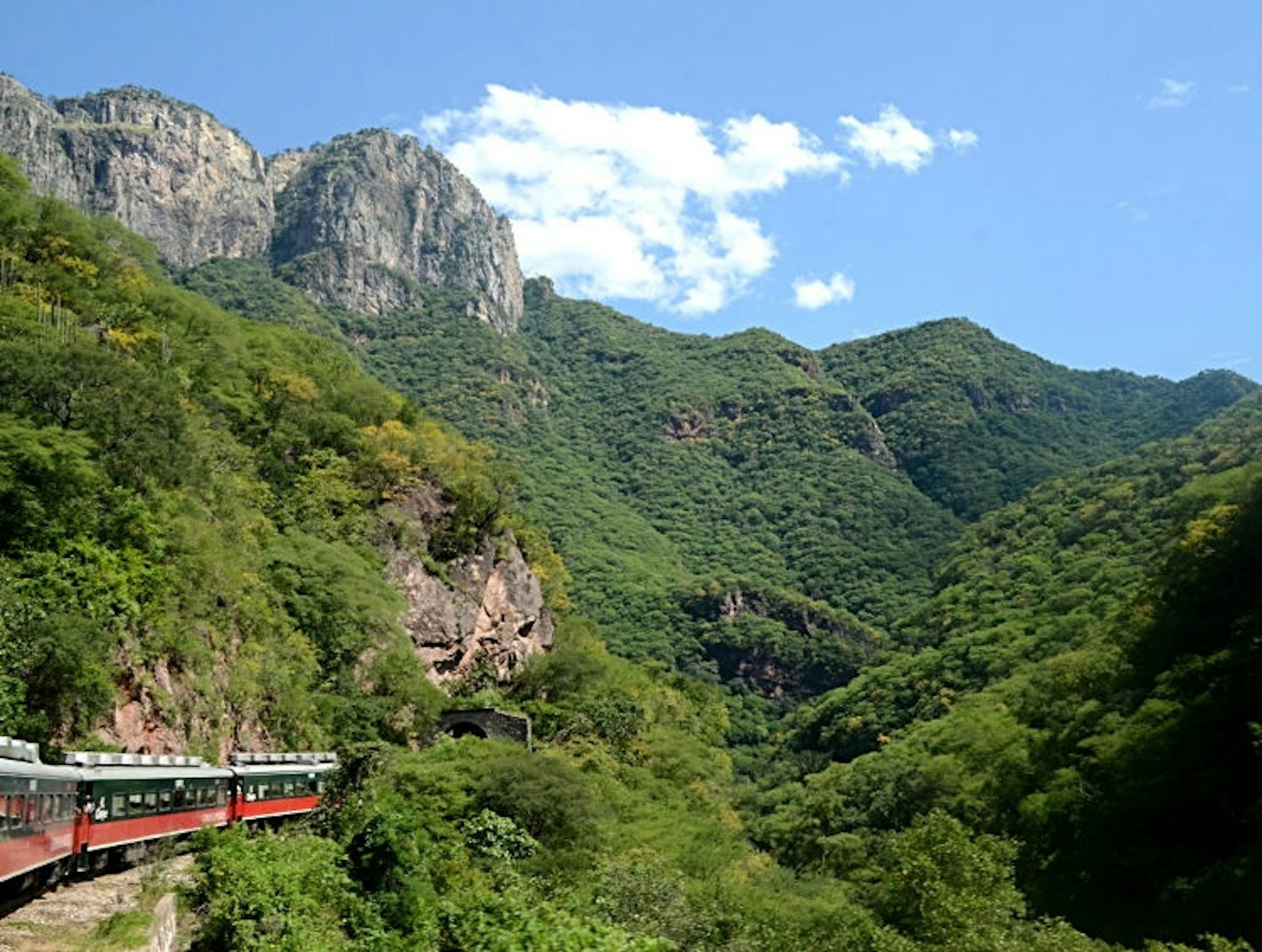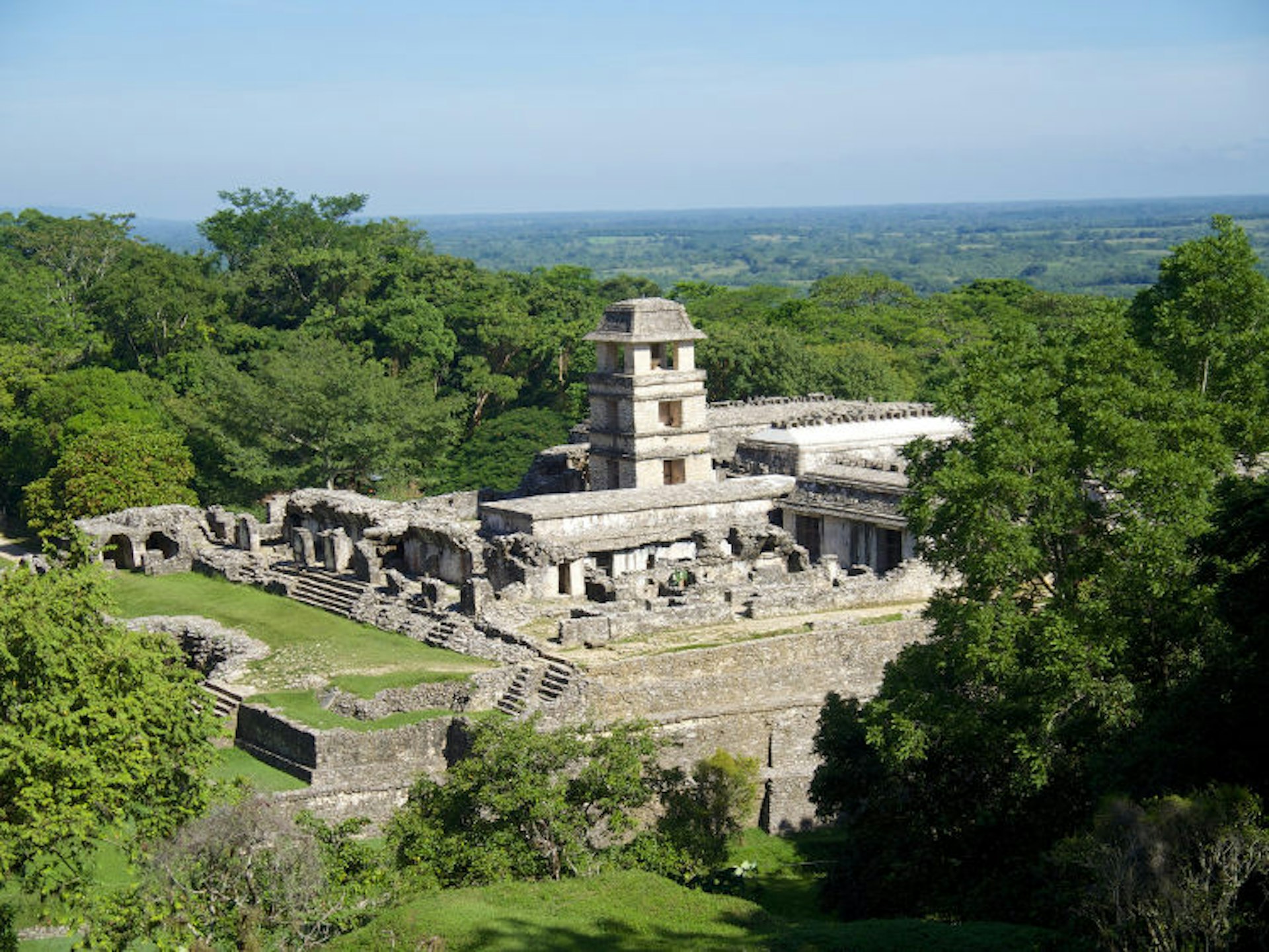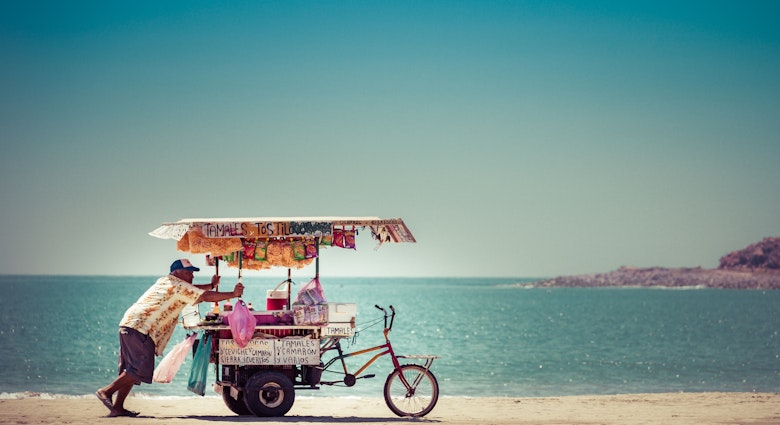Forget the seaside margaritas and hire yourself a set of wheels to explore this huge, varied but eminently driveable country, and discover some of its best-kept secrets.
1. Copper Canyon
Formed by the confluence of six rivers, Barranca del Cobre (Copper Canyon) is so vast it could swallow the Grand Canyon whole. Unlike its better known cousin in the US, Copper Canyon is verdant green with pine, fir, oak and fig trees. The best way to see it is via a 600 kilometer, 12 hour, train journey, the Ferrocarril Chihuahua al Pacífico. Most visitors content themselves with the 20 minute stop in the town of Divisadero to take vertigo inducing photos. The more intrepid traveler should venture deep into the canyon floor to meet the Tarahumara people who, due to the terrain, have become excellent endurance runners.

2. Espíritu Santo, Mexico
This Unesco-listed nature reserve situated off the coast of Baja California is a must-see for its breathtaking sheer red cliffs, windswept sand dunes and flawless turquoise bays. The wildlife that inhabits this otherworldly landscape is similarly extraordinary: day-trippers can view gray whales, swim with manta rays and sea lions and then bunk down courtesy of the island’s only lodging, the seasonal Baja Camp (operational from May to October) which offers sybaritic delights like good wine, gourmet meals and all the stargazing you can handle.
3. Mérida
The second largest historic center outside of Mexico City, Mérida’s streets are lined with grand mansions from the town’s boom years as the center of the sisal trade. Some are little more than crumbling ruins, others have been renovated into stately homes and hotels. Take a walking tour of some of the grandest interiors every Turesday, November to April, departing from the Merida English Library.
The Cathedral of San Ildefonso is a must-see. Built from 1561 to 1598 from the dismantled pyramids that once occupied the city when it was a Maya metropolis called T’ho, this is the oldest cathedral on the American continent. Look out for the rare pipe organ and Mérida's most famous religious artifact, a statue called Cristo de las Ampollas (Christ of the Blisters).
4. Chiapas
Chiapas is a land of lakes and waterfalls, an image not normally associated with Mexico. The Reserva de la Biosfera el Triunfo is home to remarkable birdlife like the Resplendent Quetzal. The cultural heart of the state is the ancient Maya city of Palenque. While not as large as some Aztec and Toltec ruins, the remarkable detail of the carvings and frescoes have taught archeologists much of what they know about Mayan life. Take a dip in the nearby Cataratas de Agua Azul. The high mineral content makes this water run a preposterous blue and, over many years, encased fallen logs in a white crust of stone.

5. Guanajuato
Many visitors pass over Guanajuato in favor of nearby expat haven San Miguel de Allende. In truth Guanajuato is far more charming and lively. The former mining town once supplied a third of the world’s silver and it shows. Mexican Baroque was the style of the moment and a walking tour of San Cayetano, the Basilica of Guanajuato, the Temple of the Company of Jesus and the San Roque Church is a must. Beneath the city a catacomb of mining tunnels that would do Mordor proud act as roads and byways to avoid the cobblestone streets above.
6. Mazatlán
Lesser-known than its flashy coastal counterparts Acapulco, Cancun and Cabo, Mazatlán offers more subtle charms for the intrepid traveler. This Central Pacific Coast port city – located in the state of Sinaloa parallel to the southern tip of the Baja California peninsula – has had a few heydays, most notably in the 1930s and 1970s, and is finally shaking off its slightly tacky reputation thanks to a large-scale restoration of the historic center to its original Spanish Colonial glory. Stroll the Centro Historico, watch cliff divers launch themselves off the craggy headland containing El Faro, the lighthouse, or take a trip by boat to one of the city’s three islands, the most popular of which is Isla de Venados (Deer Island).
7. Isla Holbox
Formerly a shark fishing town, the tiny barrier island of Isla Holbox is on the northern tip of the Yucatan Peninsula. It’s home to the largest migration of endangered whale sharks on the planet, with more than 2000 passing by every summer (May to August). Small runabouts ferry snorkelers to the feeding grounds to swim with the placid filter feeders. Inside tip: cough up the extra propina (tip) to swim with the manta-rays which are often spotted on the return journey. Their loop-the-loop feeding is enchanting.
8. Sian Ka’an
A 1.3 million acre conservation area on Mexico’s Caribbean coast close to the town of Tulum, Sian Ka’an was established in 1986 as a Unesco Biosphere Reserve and happily more land keeps being added under this protection all the time. The Mayan name translates to ‘Where the sky was born’ and the place lives up to its lofty title thanks to seemingly endless lagoons, mangroves, jungle and cenotes (underground rivers unique to the Yucatan Peninsula). The reserve is renowned for its biodiversity – many of the plants, animals and birds can’t be found anywhere else. The site also contains well-preserved 2000 year-old Mayan archeological ruins, and several tour companies, like the Mayan-run Community Tours Sian Ka’an, offer day trips into the reserve for swimming, kayaking, bird watching and hiking.
9. Puerto Escondido
This low-key fishing village and port in the state of Oaxaca, on Mexico’s mid-Pacific coast, has remained fairly under-the-radar with travelers apart from one crucial demographic: surfers. That’s largely because of a little beach break called Zicatela – also known as The Mexican Pipeline – which basically put Mexican surfing on the map. In season (May to July) waves can reach 30 feet or more. The experience here is all about the beach, whether you’re hanging ten or just watching the pros do their stuff. Don’t let the legendary surf intimidate you though: several Puerto Escondido beaches, like Playa Carrizalillo, offer ideal conditions for beginners.
10. Sayulita
This bohemian little seaside village north of Puerto Vallarta in the Pacific state of Nayarit used to be the province of a small group of in-the-know surf buffs who gathered for the dependably good north swell from December through April. But that’s beginning to change as travelers from all the over the world discover the town’s charms. Visit while Sayulita is still low-key, all unspoiled beaches, charmingly rustic fish restaurants on the sand and quirky cafes and boutiques.
This article was originally published in February 2012.











